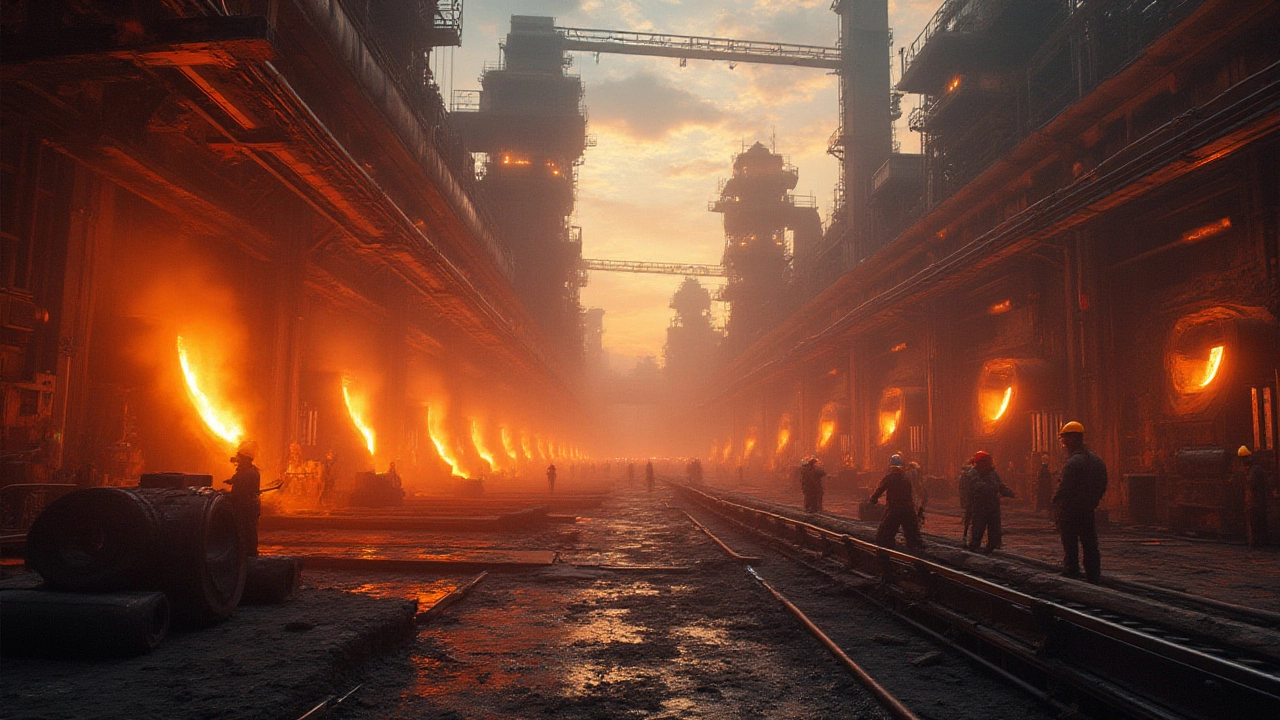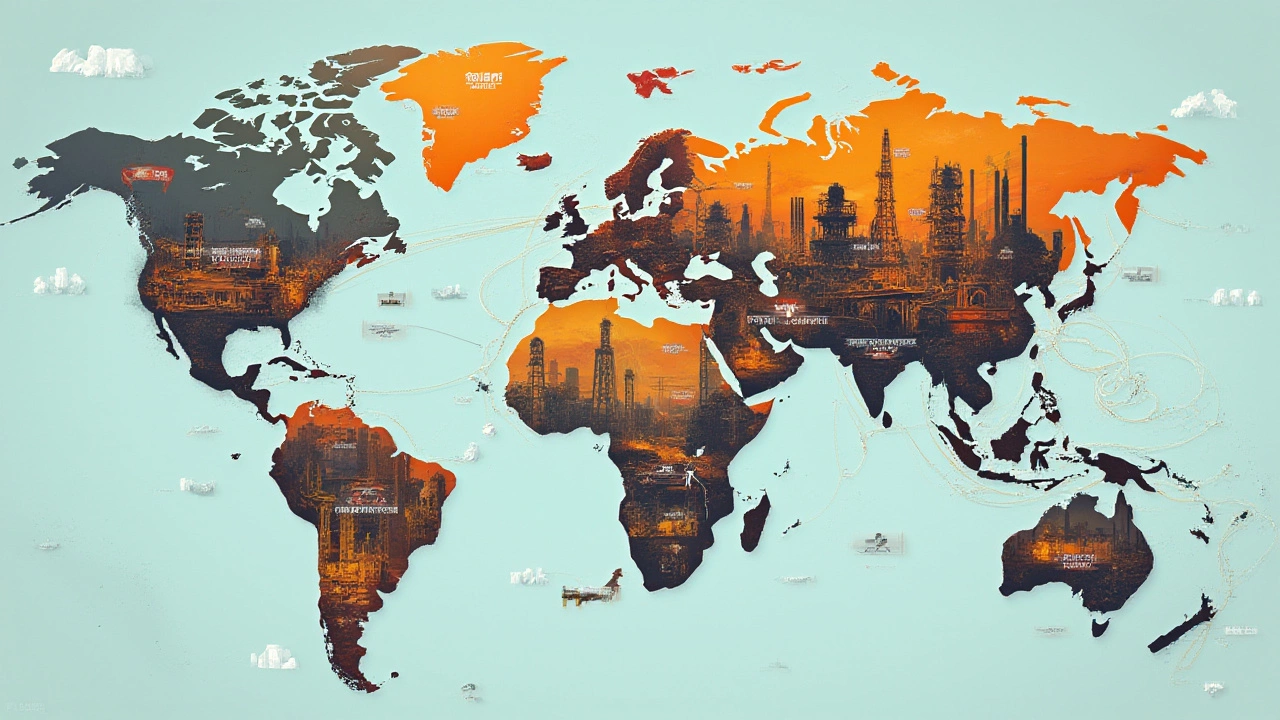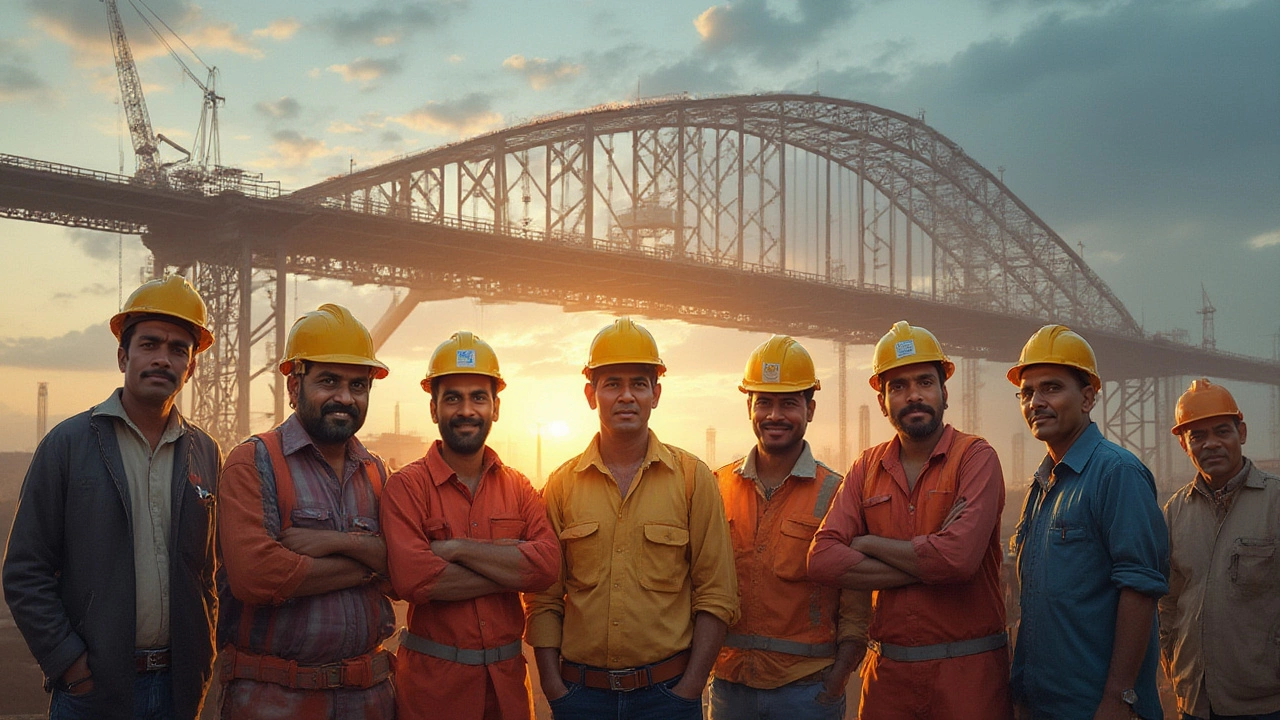Top 5 Steel Producers 2025: Countries Leading Global Steel Production

You probably don’t spend much time thinking about where the steel in your car, washing machine, or even Manchester trams comes from. But steel is everywhere, twisting through your daily life in ways that are easy to miss. The phone in your hand? Most likely made with parts that originally started off as glowing steel bars. Even the bridge you cross on the way to work owes its bones to the world’s top steel giants. Today, five countries stand above the rest, pumping out millions of tonnes of the stuff every year. But who are they, and how did they get so big in the game?
Ranking the Steel Giants: Top Producers of 2025
The steel industry has never been as crucial—or as competitive. In 2024, global steel production reached close to 1.9 billion tonnes, according to the World Steel Association. And some countries have pretty much built their modern identities around their dominance in steel output. Let’s meet the big five and peek into what keeps their furnaces burning:
- China
- India
- Japan
- United States
- Russia
China sits on the steel throne with numbers that almost defy imagination. In 2024 alone, China produced just over 1 billion tonnes of crude steel—a figure that’s bigger than the next nine countries combined. Chinese companies like Baowu and Ansteel have become names you can’t ignore, swallowing up smaller rivals and streamlining production with robots and AI. Walk through an average Chinese steel plant, and you’ll see everything from autonomous forklifts to super-sized blast furnaces taller than Big Ben.
India has climbed up quickly, thanks to massive government support and its growing appetite for cars, infrastructure, and railways. In 2024, it clocked in at about 140 million tonnes. Indian steel juggernauts like Tata Steel and JSW Steel are investing heavily in scrap-based, low-emission steel. The buzzword here is sustainability; India hopes to lead the pack when it comes to cleaner, greener steel—no small task considering their older, coal-powered plants are still running full tilt.
Over in Japan, steel still shapes much of the industrial landscape. Japan churned out around 88 million tonnes in 2024. They might not match China in sheer volume, but Japanese steel is world-famous for its high quality. Think razor-thin car body sheets or ultra-tough pipelines. Nippon Steel’s engineers are known for their obsession with precision. Their methods focus on reducing waste and squeezing more value out of every ton, making them the go-to for demanding international clients.
The United States used to be the top dog. While its heyday has passed, the US still made roughly 80 million tonnes in 2024. These days, the American steel scene is all about electric arc furnaces—much cleaner and faster than the old-school blast mills. Companies like Nucor and Steel Dynamics have nailed down a ‘recycle-first’ approach; most new steel in the US now comes from melted-down cars, old bridges, or soda cans. It’s a bit of a steel phoenix—reborn again and again.
Russia rounds out the top five, producing close to 72 million tonnes last year. Russian steelers like Severstal and NLMK mostly feed Europe, Turkey, and the Middle East. Sanctions have cut off some markets, but smart logistics—think Arctic shipping routes—help Russia keep its steel moving. Their secret weapon? Massive, resource-rich mines just a short train ride from hulking steel plants, meaning less time, less expense, and fewer supply-chain headaches.
| Country | Production (million tonnes) |
|---|---|
| China | 1,013 |
| India | 140 |
| Japan | 88 |
| United States | 80 |
| Russia | 72 |
So, what does this mean for the average person? If you drive a Japanese car in Manchester, or if your kitchen sink came from Germany, odds are the steel in those products made a pit stop somewhere in these countries. Even the razor blades you bought at Tesco have a story rooted deep within the blast furnaces of Asia, America, or Europe. The way these five giants shape their industries ripples right down to stuff you use every day—and they’re nowhere near slowing down.

How Steel Powers Daily Life and Global Economies
Steel isn’t just about skyscrapers and shipyards. It’s the backbone of construction, transport, energy, and even tech. Ever heard that the Eiffel Tower weighs around 10,100 tonnes? Imagine producing enough steel to build a hundred Eiffel Towers a day—China’s top mills can. That scale means steel shapes more than skylines. It’s woven into train tracks, sports stadiums, wind turbines, shipping containers, and even the hidden frames inside your office chair.
Let’s break down how each of these countries keeps global supply chains ticking. China’s output floods nearly every continent, from the trains running in Africa to bridges in South America. When China slows down, steel prices everywhere tend to jump. India’s rapid growth—especially in cheap housing, railways, and public works—means more steel rolling out to neighbouring countries. Their industry’s push towards clean steel could also spell friendlier skies in years to come, if it pays off.
Japanese innovation has pushed the limits on what’s possible with steel, including ultra-light and corrosion-resistant varieties used in everything from bullet trains to satellites. American steel, recycled from scrap, supports the ever-growing demand for green building materials, electric vehicles, and even cans for your lager. Russia, with its resource-rich geography, keeps its production steady and cost-competitive, which makes it a reliable—if sometimes controversial—supplier for eastern Europe and beyond.
Why does steel matter to economies? Jobs, for one. China’s steel sector alone employs nearly 3 million people, from miners to metallurgists to ship captains ferrying steel overseas. Ripple effects reach further still: every tonne of steel supports logistics, engineering, real estate, and dozens of other sectors. In the US, steel plants revived whole towns that once seemed doomed by the 1990s industrial decline. In India, building steel rail networks means connecting villages, spurring trade, and literally bridging gaps.
Another tip for understanding steel’s reach: check your country’s trade balance. Nations like China and Russia often run a steel surplus, while places like the UK import under half of what they use. That can mean price spikes if global events suddenly choke supply—think lockdowns, war, or trade sanctions. So, if you’re about to start a big renovation or buy a car, it’s worth keeping an eye on what’s happening in these top steel-producing countries. Prices for everything from beams to bikes can change almost overnight if a major plant shuts down or if Beijing decides to cut back production.
Curious about where you fit in this steel web? A typical Brit uses about 350 kg of finished steel every year—that’s everything from cutlery to radiators to roads. Multiply that by the UK’s population, and you see why being connected to global steel supply is vital for daily life, not just flashy megaprojects. The next time your neighbour complains about petrol or grocery prices, remind them they’re part of this bigger story too—steel shapes more than most of us realise.

The Future for Steel Titans: Innovation, Challenges, and What’s Next
The world of steel isn’t stuck in the past. While old-school mills still exist, innovation is roaring through. China, for instance, has cut hundreds of outdated plants to shrink pollution and boost efficiency. Already, half of new Chinese steel uses much less energy and water, and by 2030 they hope to slash industry-wide emissions by more than a third. India has plans to more than double its output by 2030, putting muscle into electric arc furnaces and investing in hydrogen-based steelmaking—an exciting shift that could set a trend for other emerging economies.
Japan’s steel engineers lead the charge on high-tech, low-waste methods. They’re betting on ‘smart steelworks’: plants loaded with sensors and advanced software that predict failures or fine-tune output in real time. Imagine a mill that fixes itself before anything actually breaks! That means less downtime, better quality, and stronger export demand, especially for stuff like high-end electronics or precision tools.
The United States is leaning hard into recycling, partly out of necessity. As regulations tighten and people demand cleaner tech, American producers are racing to squeeze every bit of use out of old scrap, which is both more sustainable and, in many cases, cheaper than mining new iron. Think about this: more than 70% of America’s steel comes from recycled scrap now, compared to around 20% a generation ago. Not bad, considering many of those same companies were written off as ‘dead’ in the 1980s.
Russia’s steel sector faces bigger hurdles. Sanctions have closed off parts of the European market, and wars always threaten to reroute where steel can be sold. But Russian producers aren’t giving up—new deals with Asia and Africa, plus better supply chains through the Arctic, help keep their exports flowing. Their challenge is to modernise old factories without losing their low-cost edge. Easier said than done, but with so many homegrown resources at hand, Russia is likely to stay a major player for a while yet.
What’s next for steel? The industry faces two main battles: going green and managing change. Cleaner steel tech—from hydrogen furnaces to carbon capture—isn’t cheap, but buyers are demanding it more each year. Climate goals in Europe and Asia now directly reward producers who cut emissions. Meanwhile, countries that don’t adapt risk being left behind as the green wave takes over. If China or India ever cracks the perfect clean-steel formula, the entire global industry could shift overnight.
Bottom line—steel is never just about measuring tonnes or ranking countries. It’s about the constant balancing act between growth, the planet, and people’s needs. If you’re building anything big, or even just curious about what’s under your feet in Manchester, these five steel giants are shaping the world—one hot, glowing slab at a time. Watch this space: the steel story is far from over.